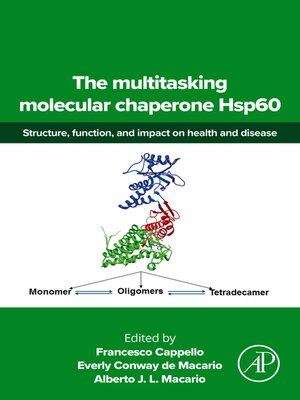The multitasking molecular chaperone Hsp60
ebook ∣ Structure, function, and impact on health and disease
By Francesco Cappello

Sign up to save your library
With an OverDrive account, you can save your favorite libraries for at-a-glance information about availability. Find out more about OverDrive accounts.
Find this title in Libby, the library reading app by OverDrive.



Search for a digital library with this title
Title found at these libraries:
| Library Name | Distance |
|---|---|
| Loading... |
The Multitasking Molecular Chaperone Hsp60: Structure, Function, and Impact on Health and Disease provides an overview of this key component of the Chaperone System (CS). The book covers various areas of medicine in which Hsp60 chaperonopathies have been identified. Various chapters discuss the Hsp60 structure, localization, functions, and participation in disease mechanisms both genetic and acquired, focusing on humans but also presenting data obtained from pro- and eukaryotic experimental models. The main goal is to provide information accessible to all healthcare professionals in a way that can be understood by nonspecialists and that would stimulate clinical and pathological detection of Hsp60 chaperonopathies.Molecular mechanisms are briefly described with the purpose of illuminating roads toward accurate diagnosis, treatment, and patient monitoring. Consequently, the possibility of developing/applying chaperonotherapy centered on Hsp60, as a therapeutic tool or target, is analyzed in many sections of this book, across a variety of medical specialties. Over the last several years, the importance of the CS as a physiological system has been brought to prominence and its roles in health and disease made clear. The molecular chaperones, including Hsp60, are the key components of the CS that are typically cytoprotective, but they can also be etiopathogenic factors, causing diseases named chaperonopathies.
- Discusses strategies for diagnosis, patient monitoring, and treatment of disorders in which Hsp60 plays a role and can be used as biomarker and therapeutic target or agent
- Explains the fundamental biophysics, genetics, physiology, and pathogenicity of Hsp60
- Explores the mechanisms involving Hsp60 abnormalities causing disease, including carcinogenesis, inflammation, autoimmunity, and neurodegenerative disorders







